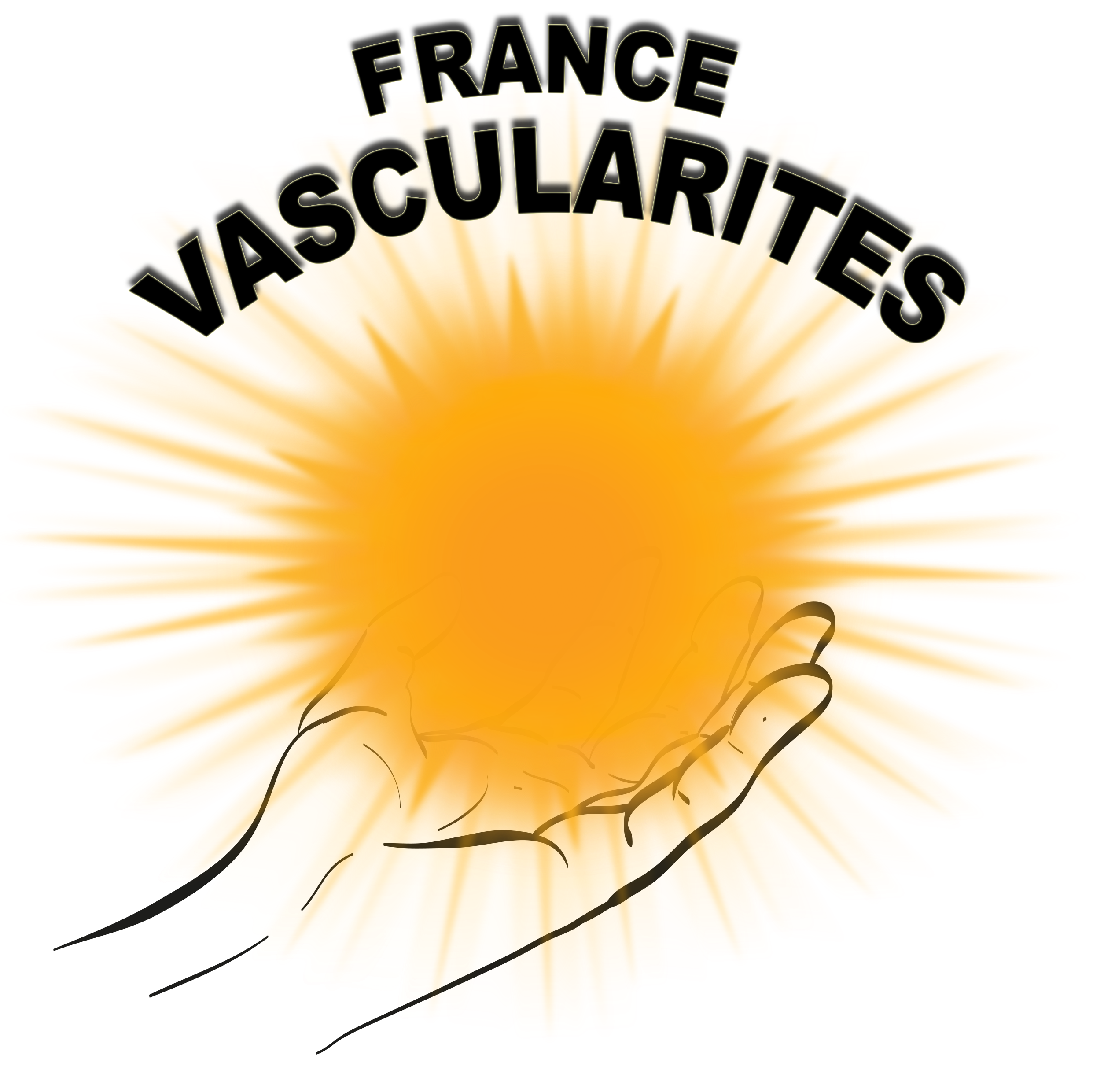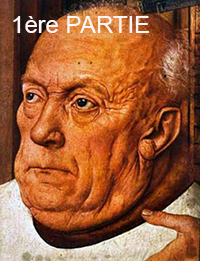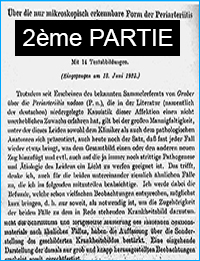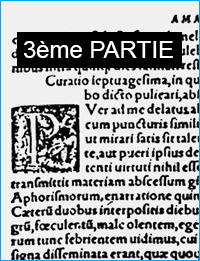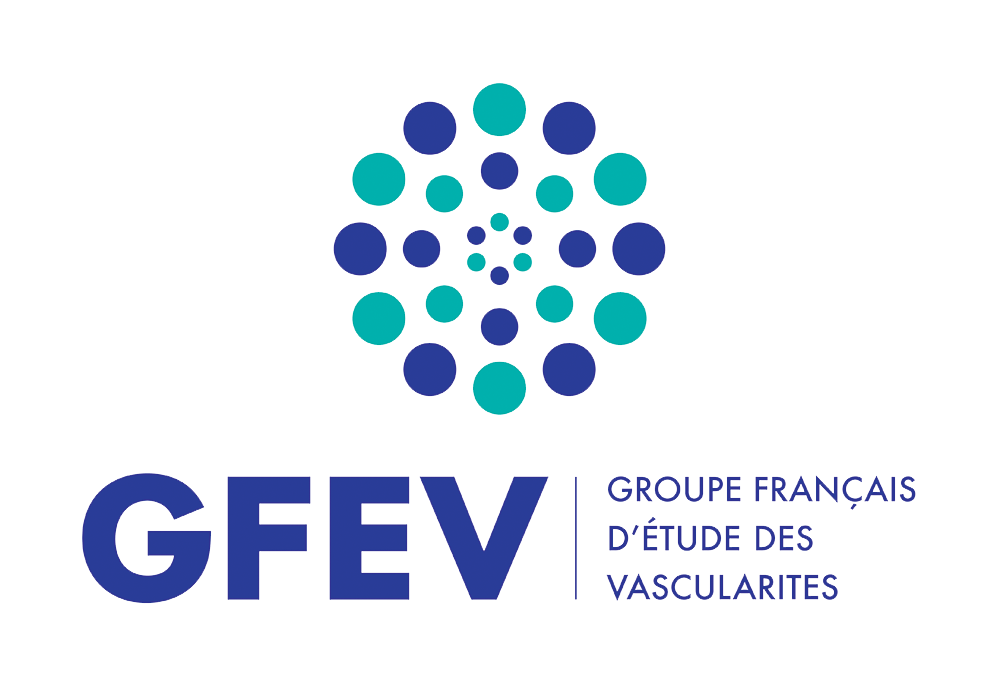Les purpuras
Le terme de purpura est un dérivé du mot grec porphyra. Le porphyre est le nom d’un mollusque marin duquel on extrait un pigment rouge. Les lésions purpuriques associées aux fièvres pestilentielles sont reconnues dès l’antiquité. L’italien Girolamo Fracastorius (57) (1555) décrit chez des malades avec fièvre et infection des spots rouges à la surface de la peau qu’il appelle «lenticulae», «puncticulae»ou «peticulae», c’est-à-dire des pétéchies. En 1557, le médecin portugais Amatus Lusitanus (58), de son vrai nom John Rod de Castelbranco, précise que ces atteintes cutanées peuvent également se manifester en dehors des fièvres: «Morbus Pulicaris absque Febre». En France Daniel Sennert parle du «pourpre», terme retenu ensuite par L. de Galtier (59) (1645) et A. Porchon (60) (1688) dans leurs traités sur les éruptions cutanées. La première description clinique détaillée du purpura est faite en 1658 par Ewgalemus (61) qui utilise le terme de «scurvey». C’est également en 1658 que Lazare de la Rivière (62), médecin du Roi de France, énonce l’idée selon laquelle le purpura («macula puerpereas») est du à un épaississement du sang sortant des veines capillaires de la peau. En 1734, Alf Hornung (63) propose une première subdivision du purpura en trois groupes: le purpura simple, le purpura fébrile et le purpura scorbutique. Une année plus tard Paul Gottlieb Werlhof (64) isole le purpura hémorragique («morbus maculosus haemorrhagicus»).
Le purpura de Henoch-Schönlein
Dans son traité sur les maladies de la peau (1802) Robert Willan présente une nouvelle classification des purpuras. Il distingue 4 types de purpura: simple, hémorragique, urticarien et contagieux. En 1801, William Heberden (66) rapporte le cas d’un enfant de 5 ans dont les jambes sont recouvertes de pétéchies hémorragiques et qui présente en plus des douleurs abdominales avec vomissements, diarrhée sanguinolente, douleurs articulaires et hématurie. En 1837, Johann Schönlein (67) décrit à Berlin plusieurs cas associant éruption purpurique et arthrite qu’il dénomma «purpura rubra», puis «purpura rheumatica». Sir William Osler (68) publie entre 1895 et 1914 plusieurs observations analogues sous le nom de «purpura anaphylactoïde» qu’il considérait lié à des phénomènes allergiques. L’image clinique du purpura rhumatoïde est complétée par Edouard H. Henoch (69) en 1887 qui y ajoute une néphropathie. Il faudra attendre 1973 pour connaître la nature de cette atteinte rénale grâce à Baart de la Faille (70) qui va montrer la présence de dépôts mésangiaux d’IgA.
Critères de diagnostic du purpura de Henoch-Schönlein d’après l’ACR, 1990 :
• Purpura vasculaire
• Début de la maladie avant 20 ans
• Atteinte abdominale (douleur diffuse aggravée par les repas; ischémie du grêle avec diarrhée hémorragique)
• Arthralgies
• Hématurie – Protéinurie
• Présence de granulocytes dans la paroi des artérioles et veinules
Autres purpuras
L’association d’un purpura et de cryoglobulinémie est signalée pour la première fois en 1923 par Maxwell Wintrobe (71). En 1943, Jan Gosta Waldenström (72) décrit le purpura associé à l’hypergammaglobulinémie. Enfin, en 1974, Frederic McDuffie (73) définit un autre type particulier de purpura urticarien lié à une réponse immunologique contre le complément C1q, le «purpura hypocomplémentémique».
Critères de diagnostic du purpura urticarien de McDuffie :
• Urticaire chronique
• Purpura des Membres Inférieurs
• Arthralgies
• Arthrite
• Glomérulonéphrite
• Hypocomplémentémie
Conclusion
L’histoire de la Médecine est riche de ses observations, certes, de ses conquêtes, certainement, des hommes qui l’illustrent assurément. Celle des vascularites cristallise les facultés des plus subtils d’entre-eux: don inné de l’observation, esprit de la méthode, sens aigü de l’investigation. Elle rassemble aussi, parmi les disciplines les plus variées, ce qui semblait épars: chirurgie, rhumatologie, dermatologie, histologie, biologie... Enfin, elle illustre parfaitement cet «Esprit» issu du Siècle des Lumières qui sut allier au regard porté sur les hommes l’exploration des mécanismes qui l’animent... et le minent, l’entraînant inéluctablement vers la mort. Rarement la pathologie aura fait appel à autant de clairvoyance, de nuances, trouvant sous le pinceau des peintres et le ciseau des sculpteurs, les reflets des tourments qu’elle tente d’appréhender.
Bibliographie
1. SCHOLL R. Der Papyrus Ebers: Die groesste Buchrolle zur Heilkunde
Altaegyptens. Leipzig, Univ.Presse, 2002.
2. HIPOCRATES: De intern. affectionibus. Sect.V, p.558.
3. GALENUS C.: De tumoribus praeter naturam, chap.11.16, in Kuehn: Opera
omnia, Cnoblioch, Leipzig 1821.
4. SAPORTA A.: De tumoribus praeter naturam, Ravaud, Lyons, 1624 (manuscrit
de 1554)
5. HODGON J.A.: Treatise on the diseases of arteries and veins, Underwood,
London, 1815.
6. ROKITANSKY K.: Ueber einige der wichtigsten Krankheiten der Arterien.
Denkschr.Akad.Wiss.Wien, math.nat.Kl, 1852; Kl.4: 1-(72).
7. ZEEK P.M.: Periarteritis nodosa and other forms of necrotizing angiitis.
N.Engl.J Med.1953; 248: 764-772.
8. COPEMAN PWM., RYAN TJ.: The problems of classification of cutaneous
angiitis with reference in: histopathology and pathogenesis. Br.J.Dermatol.
1970; (suppl.5) 82: 2-14.
9. FAUCI AS., HAYNE BF., KATZ P.: The spectrum of vasculitis: clinical, pathologic,
immunologic, and therapeutic considerations. Ann.Intern.Med.1978;
89: 660-676.
10. DE SHAZO RD.: The spectrum of systemic vasculitis: a classification to aid
diagnosis. Postgraduad.Med.1975; 58: 78-82.
11. ALARCON-SEGOVIA D.: Classification of the necrotizing vasculitides in
man. Clin.Rheum.Dis 1980; 6: 223-31.
12. LIE JT.: Systemic and isolated vasculitis: a rational approach of classification
and pathologic diagnosis. Pathol. Ann.1989; 24: 25-114.
13. HUNDER CG., AREND WP., BLOCH DA. & al: The American College of
Rheumatology 1990 criteria for the classification of vasculitis.Arthritis Rheum.
1990; 33: 1065-1129.
14. JENNETTEJC.,FALKRJ.,ANDRASSYK.:Nomenclatureofsystemicvasculitis.
Proposal of an international consensus conference. Arthritis Rheum.1994;
37: 187-192.
15. APPELBOOM T.: Les affections rhumatismales dans l’art et dans l’histoire.
Malherbe Ed., Bruxelles 1988.
16. HUTCHINSON J.: Diseases of the arteries. I. on a peculiar form of thrombotic
arteritis of the aged which is sometimes productive of gangrene. Arch.
Surg. (London) 1889; I: 323.
17. HORTON BT., MAGATH TB., BROWN GE.: An undescribed form of arteritis
of the temporal vessels. Mayo Clin.Proc., 1932; 7: 1.
18. GILMOUR JR.: Giant cell chronic arteritis. J.Pathol.Bact. 1941; 53: 263-277.
19. MORGAGNI JB.: De sedibus et causis morborum par anatomen indagatis.
Remondi, Venicia 1761.
20. SAVORY WS.: Case of a young woman in whom the main arteries of both
upper extremities and of the left side of the neck were throughout completely
obliterated. Med.Chir.Trans.Lod 1856; 29: 205-211.
21. TAKAYASU M.: A case with unsual changes of the central vessels in the
retina. Acta Soc.Ophtalmol.Jpn. 1908; 12: 554-563.
22. ONISHI S., KAGOSHIMA R.: Discussion, Communication Tarayasu. Acta
Soc.Ophtal. 1908; 12: 554.
23. SCHIMUZU K., SANO K.: Pulseless disease. J.Neuropathol.Clin.Neurol.
1951; 1: 37-47.
24. CACCAMISE WC., OKUDA K.: Takayasu’s or pulseless disease. An anusual
syndrome with ocular manifestations. Am.J.Ophtalmol. 1954; 37: 748.
25. MATANI AM.: De aneurysmaticis praecordiorum morbis animadiversionis
juxta exemplar liburnium recusal. Fantechi, Livorno 1761.
26. EPPINGER H.: Pathogenesis (Histogenesis und Aetiologie) der Aneurysmen
einschliesslich des Aneurysma equiverminosum. Pathol.-anatom.Studien.
Arch.Klin.Chir. 1887; 35: 1-553.
27. VIRCHOW R.: Die krankhaften Geschwuelste. Hirschwald, Berlin 1863.
28. KUSSMAUL A., MAIER R.: Ueber eine eigentuemliche Arterienerkrankung
(Periarteritis nodosa), die mit Morbus brightii und rapid fortschreitender
allgemeiner Muskellaehmung einhergeht. Dtsch.Arch.Klin.Med. 1866; 1:
484-517.
29. MEYER P.: Ueber Periareteritis nodosa oder multiple Aneurysmen der mittleren
und Kleineren Arterien. Virchows Arch.Pathol.Anat.Allg.Pathol.1878;
74: 277-319.
30. FLETCHER HM.: Ueber die sogenannte Periarteritis nodosa. Beitr. Pathol.
Anat. Allg. Pathol. 1892; 11: 323-343.
31. FERRARI E.: Ueber Polyarteritis acuta nodosa (sogenannte Periarteritis
nodos) und ihre
Beziehungen zur Polymyositis und Polyneuritis acuta. Beitr.Pathol.Anat.1903; 34: 350-386.
32. DICKSON WEC.:
Polyarteritis acuta nodosa and Periarteritis nodosa.
J.Pathol.Bact. 1908; 12: 31-37.
33. BEITZKE: Ueber einen Fall von arteritis nodosa. Virchow Arch.Pathol.Anat.
1910; 199: 214-237
34. VON HAUN: Pathohistologische und experimentelle Untersuchungen ueber
Periarteritis nodosa. Virchows Arch.f.path.Anat. 1920; 227: 90.
35. OPHUELS W.:
Periarteritis acuta nodosa. Beitr.Intern.Med. 1923; 32:
870-898.
36. DUVERNE J., MOUNIER R.: Formes chroniques et essentiellement dermatologiques
de la périartérite noueuse d’après deux observations personnelles.
Revue Lyonnaise Médecine, 1958; 7: 423-426.
37. KLINGER H.: Grenzformen der Periarteritis Nodosa. Frankf.Z.Pathol. 1931;
42: 455-480.
38. WEGENER F.: Ueber generalisierte, septische Gefaesserkrankungen. Verh.
Dtsch. Ges. Pathol. 1936; 29: 202-210.
39. CARRINGTON CB; LIEBOV AA.: Limited forms of angiitis and granulomatosis
of Wegener’s type. Am.J.Med. 1966; 41: 497-527.
40. VAN DER WOUDE FJ., RASMUSSEN N., LOBATTO S.: Auto-Antibodies
against neutrophils and monocytes: tool for the diagnosis and marker of
disease activity in Wegener’s granulomatosis. Lancet 1985; 1: 425-429.
41. NILES JL., Mc CLUSKEY RT., AHMAD MF., ARNAOUT MA.: Wegener’s
granulomatosis autoantigen is a novel neutrophil serine proteinase. Blood
1989; 74: 1888-1893.
42. WOHELWILL F.: Ueber die nur mikroskopisch erkennbare Form der Periarteritis
Nodosa. Arch.Pathol.Anat. 1923; 246: 371-411.
43. ARKIN A.: A clinical and pathological study of periarteritis nodosa: a report
of five cases, one histologycally headed. Am.J.Pathol. 1930; 6: 401-426.
44. WAINWRIGHT J., DAVSON J.: The renal appearances in microscopic form
of Polyarteritis nodosa. J.Pathol.Bacterol. 1950; 62: 189-196.
45. ZEEK PM., SMITH CC., WEETER JC.: Studies on Periarteritis nodosa.
Am.J.Pathol. 1948; 24: 889-917.
46. DAVIES DJ., MORAN JE., NIALL JF., RYAN GB.: Segmental necrotising
glomerulonephritis with antineutrophil antibody: possible arbovirus aetiology.
Brit.Med.J. 1982; 285: 606.
47. FALK RJ., JENNETTE JC.: Anti-neutrophil cytoplasmic autoantibodies with
specificity for myeloperoxydase in patients with systemic vasculitis and idiopathic
necrotizing and crescentic glomerulonephritis. N.Engl.J.Med. 1988;
318: 1651-1657.
48.MOENCKENBERG JG.: Ueber periarteritis nodosa. Beitr.Pathol.Anat. 1905;
38: 101-134.
49. LAMB AR.: Periarteritis nodosa: A clinical and pathological review. Arch.
Intern.Med. 1914; 14: 481-516.
50. COHEN MB., KLINE BS., YOUNG AM.: The clinical diagnosis of periarteritis
nodosa. Jama 1936; 107: 1555-1558.
51. RACKEMAN FM., GREENE JE.: Periarteritis nodosa and asthma. Tr.A.Am.
Physicians 1939; 54: 112-118.
52. WILSON KS., ALEXANDER HL.: The relation of periarteritis nodosa to
bronchial Asthma and other forms of human hypersensitiveness. J.Lab-Clin.
Med. 1945; 30: 195-203.
53. CHURG J., STRAUSS L.: Allergic granulomatosis, allergic angiitis and
periarteritis nodosa. Am.J.Pathol. 1951; 27: 277-301.
54. HUMBEL R.L.: observation personnelle, non publiée.
55. VON WINIWARTER F.: Ueber eine eigentuemlische Form von Endarteritis
und Endophlebitis mit Gangraen des Fusses. Arch.Klin.Chir. 1879; 23:
202-226.
56. BUERGER L.: Thrombo-angiitis obliterans: a study of the vascular lesions
leading to the presinile spontaneous gangrene. Am.J.Med.Sci. 1908; 136:
567-580.
57. FRASCATORIUS H.: De Morbis contagiosis. Lib.II, Opera Omnia, Venezia
1555.
58. AMATUS LUSITANUS: Curationum medicinalum centuriae quator. Basileae
1556.
59. de GALTIER L.: Enchiridion thérapeutique et prophylactique du pourpre.
Paris 1645.
60. PORCHON A.: Nouveau traité du pourpre, de la rougeole et petite vérole, de
leur nature et leurs remèdes. Paris 1688.
61. EUGALEMUS S.: De morbo scorbuto Liber. Hagae 1658.
62. RIVIERUS L.: Praxis medica or the compleat Practice of Physic. Streaton,
London 1668.
63. HORNUNG ALF.: De purpura sine febre miliari. Jeane1734.
64. WERLHOF PG: Opera Omnia. Helwing, Hannover 775.
65. WILLAN R.: On cutaneous diseases, Barnard JB, London 1808.
66. HEBERDEN W.: Commentarii de Marlbaun – Historia et curatione. Payne T.,
London 1801.
67. SCHOENLEIN J.L.: Allgemeine und spezielle Pathologie und Therapie.
Herisau, St.Gallen, 1837.
68. OSLER W.: Visceral lesions of purpura and allied conditions. Brit.Med.J.
1914; 1: 517-525.
69. HENOCH EH.: Ueber eine eigentuemliche Form von Purpura. Berl. Klin.
Wochenschr. 1874; 11: 641-643.
70. BAART DE LA FAILLE – KUYPER EH., KATER L., KOOIKER CJ.: IgA
deposits in cutaneous blood vessel walls and mesanginus in Henoch-Schoenlein
syndrom. Lancet 1973: 892-894.
71. WINTROBE M., BLUELL M.: Hyperproteinemia associated with multiple
myeloma. Bull.John Hopkins Hosp. 1933; 52: 156-165.
72. WALDENSTROEM JG.: Kliniska metoder foer pavisande av hyperproteinaemi
och deras praktiska waerde for diagnostiken. Nordisk Med. 1943; 20:
2288-2295.
73. McDUFFIE FC, SAMS VM Jr., MALDANO ME et al: Hypocomplementemia
with cutaneous vasculitis and arthritis: Possible immune complex Syndrom.
Mayo Clin.Proc. 1973; 48: 340-348.
